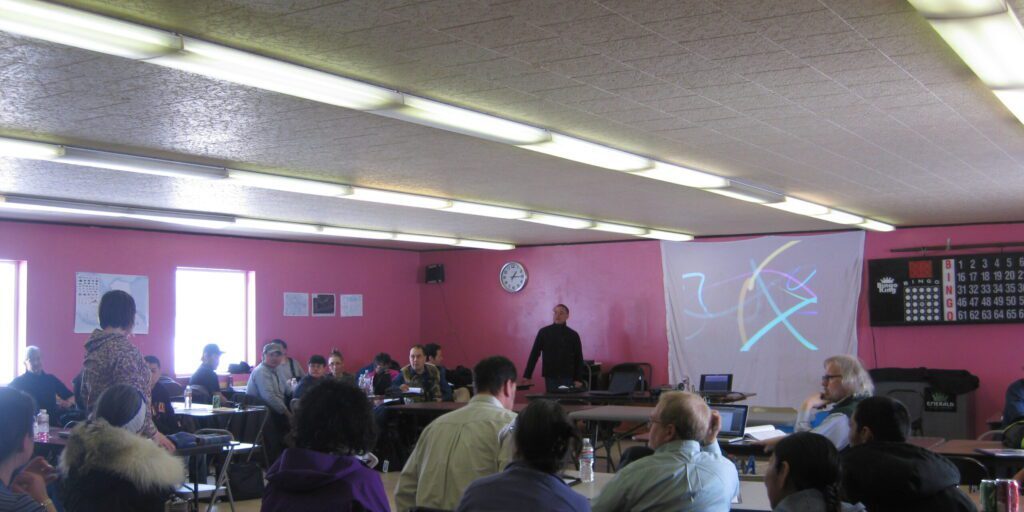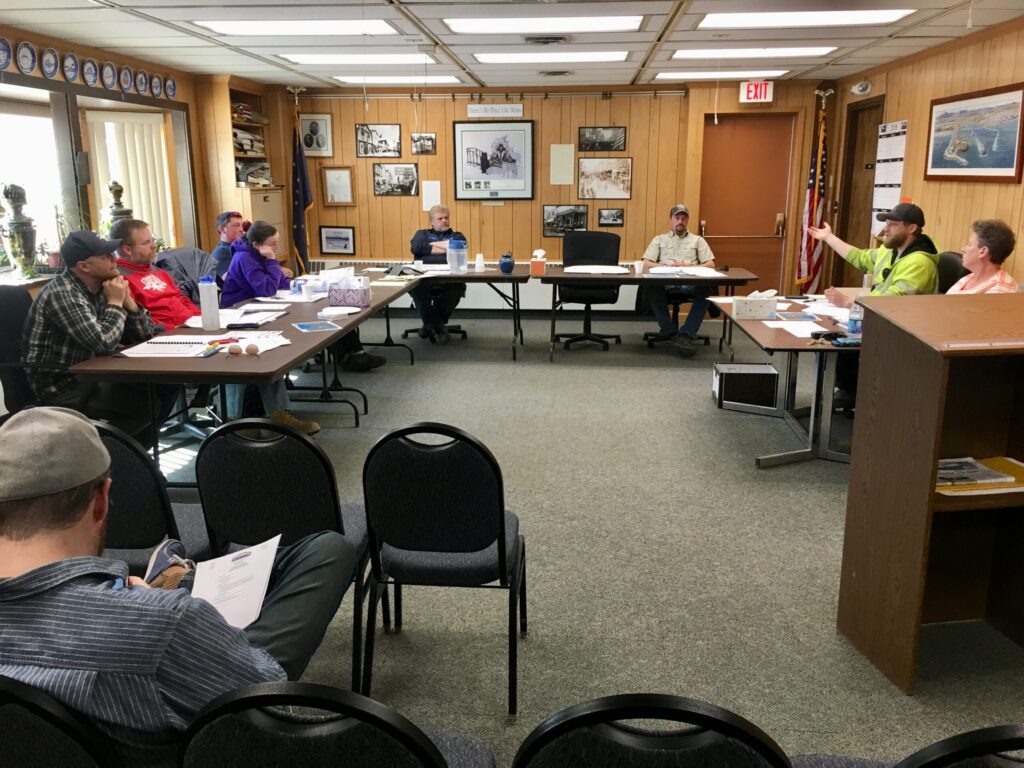Players from across Alaska met in Gambell Tuesday to discuss arctic development.
Presenters included state and industry representatives, government research groups, and native and village corporations. The Bering Sea Alliance, LLC organized the event. CEO Art Ivanoff laid out the meeting’s three components.
One, arctic resource development. “It’s something we think is necessary,” Ivanoff said, “just based on the unemployment, underemployment that we have in the villages.”
Two, arctic infrastructure. “Infrastructure we think is critical, because we think the villages have something to offer.” Ivanoff continued, “We know Nome and Port Clarence is critical, but we also think that smaller, satellite ports are needed just because the amount of traffic that we’re seeing, the amount of natural gas and oil that are found in the arctic.”
Three, oil spill response. “Just realizing that with all the traffic, there’s potential for an accident to occur, and we want to be prepared,” finished Ivanoff.
The Bering Sea Alliance is composed of seven village corporations in the Bering Straits Region. Each is dedicated to developing arctic resources while protecting their subsistence way of life.
The meeting intended to create action items for each of these components, but poor weather the night before kept planes from reaching the island. The delay pushed back the meeting and canceled attendance for key presenters like the Coast Guard, U.S. Army Corp of Engineers, and Senator Lesil McGuire, Co-Chair of the Alaska Arctic Policy Commission.
With the abbreviated schedule and loss of voices, attendees heard a series of presentations instead of arctic planning.
However, the closest offering of an action item came from Dr. Martin Robards with the Wildlife Conservation Society.
“We’d have two or three people out of each of the coastal communities who once a year are trained in oil spill response,” Robards said, “and also in their role within that larger Incident Command. So they become the people with the knowledge base on how the big picture looks within the community. They’re the go-to people. They have the training.”
He also advised the region to identify subsistence areas to protect first in the case of an oil spill.
“They we would start planning how you would deal with those specific areas.” Robards explained, “It gets away from this idea of just having an equipment cache somewhere to having the people trained to do something very specific at a specific location with the right equipment.”
Other presentations included the U.S. Geological Survey, who provided an overview of mineral deposits on the Seward Peninsula. A representative from the Bureau of Ocean and Energy Management said the Bureau planed to release recommendations on arctic drilling later this year that should integrate traditional knowledge gathered from Alaska Natives. What those recommendations would be was not shared.
Senator Donny Olson and Representative Neil Foster also spoke. Both recommended the Bering Sea communities put in writing what changes and benefits they want in regards to arctic development so they can advocate for those positions in the legislature.
The meeting continues through today with a presentation from the Bureau of Safety and Environmental Enforcement.







